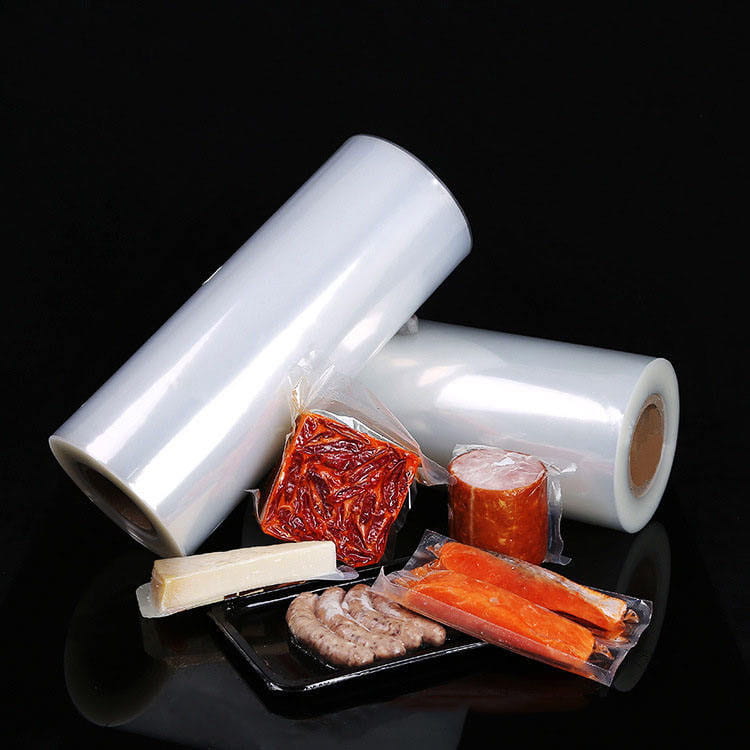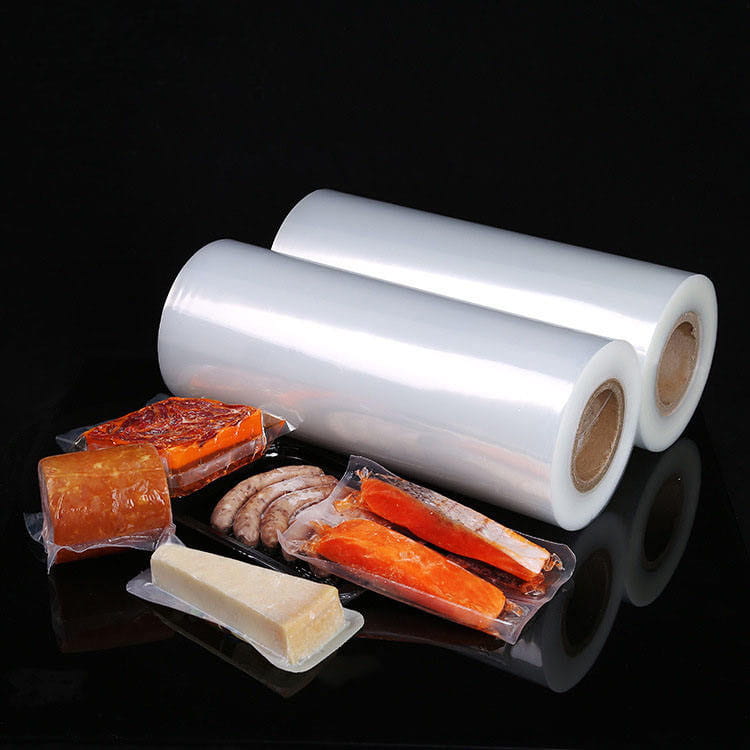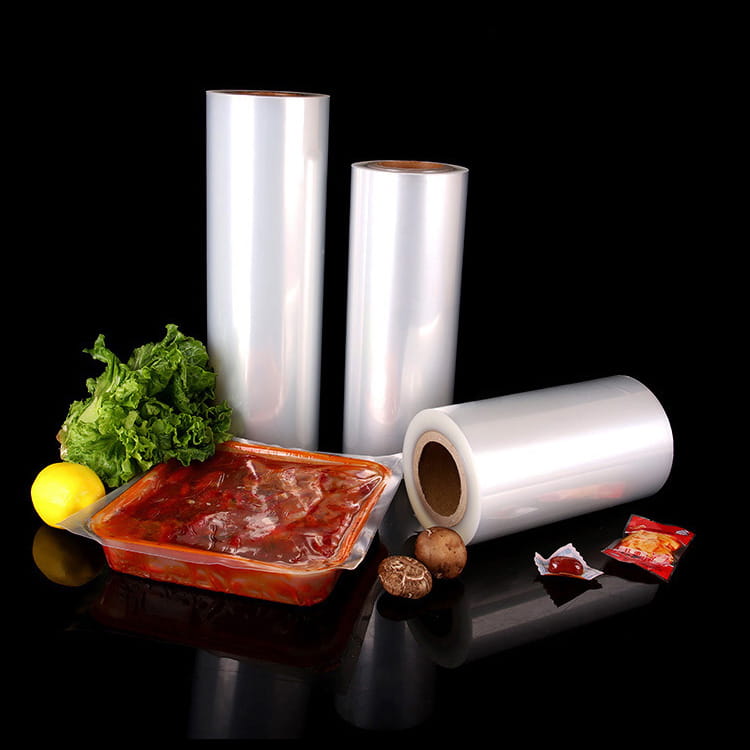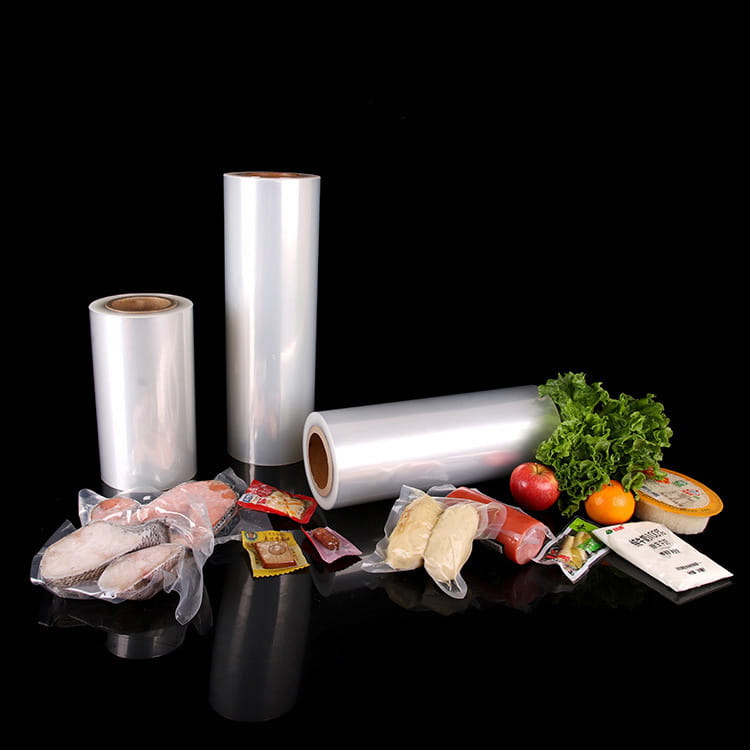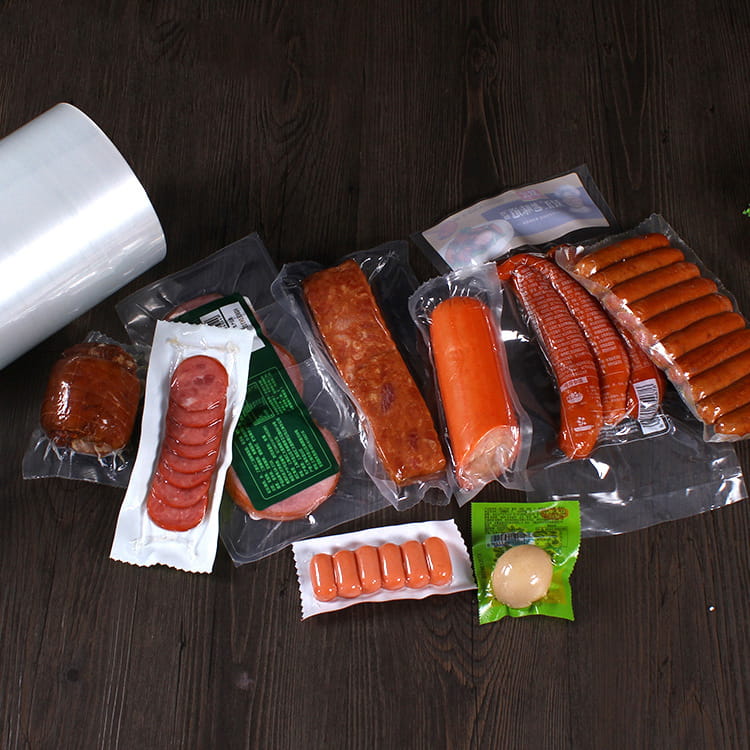Jelly usually has a water content of more than 80%, and is prone to volume expansion caused by water crystallization under freezing conditions, which places extremely high demands on the impact resistance of packaging materials. The brittleness index of traditional PE film increases by 300% at -18°C, and the breakage rate in the drop impact test exceeds 20%. In addition, the average annual temperature in tropical regions such as Southeast Asia reaches 28-32°C, and the risk of cold chain interruption is high, requiring packaging materials to maintain mechanical stability under extreme temperature differences.
The PA layer provides mechanical support and barrier properties, and the PE layer guarantees heat sealing and low-temperature toughness. The two are formed into a "rigid and flexible" composite system through co-extrusion casting technology. The core of this technology lies in the interpenetrating network structure at the molecular level, which increases the impact strength of the composite film to 12kJ/m² at -18°C, which is 4 times stronger than ordinary PE film, providing a material science basis for jelly cold chain packaging.
Materials Science: Molecular Mechanism of Impact Resistance
The amide groups (-CONH-) in the PA molecular chain form a hydrogen bond network at low temperatures, inhibiting molecular chain slippage. Experiments show that the storage modulus (E') of the PA layer remains at 2.2GPa at -18°C, a decrease of only 15% from room temperature, much lower than the 60% decrease of PE. This molecular rigidity enables the composite film to maintain structural integrity during drop impact.
The PE layer forms a low-crystallinity spherulite structure through a co-extrusion process, with an amorphous region accounting for 40%, giving the material low-temperature ductility. At -18°C, the elongation at break of the PE layer remains at 350%, an increase of 200% over ordinary PE film. This flexibility effectively absorbs impact energy and avoids brittle fracture.
PA and PE form an interpenetrating transition layer of 0.1-0.5μm thick in co-extrusion casting, and the rigid molecular chains of PA and the flexible segments of PE achieve energy transfer through physical entanglement. Impact tests show that the interpenetrating layer can disperse the impact energy to the entire film body, making the impact absorption efficiency of the composite film 300% higher than that of the single-layer film.
Process principle: key control of co-extrusion casting technology
In the molten state of 260-280℃, PA and PE are extruded synchronously through a multilayer distributor to form a dynamic diffusion layer. The amide group and the PE chain segment produce hydrogen bonds, which promote the mutual penetration of molecular chains. The key points of process control include:
Temperature gradient: The temperature of the PA layer is controlled at 275±5℃, and the PE layer is 265±5℃ to avoid thermal degradation;
Flow rate matching: The extrusion rate ratio of PA to PE is 1:1.2 to ensure uniform thickness of the interpenetrating layer.
The melt is rapidly solidified under the action of the quenching roller (surface temperature <30℃), and the PA layer forms a highly oriented β-crystalline structure, and the PE layer generates low-crystallinity spherulites. The cooling rate control must meet the following requirements:
PA layer: cooling rate>150℃/s, promoting the formation of β crystal;
PE layer: cooling rate<80℃/s, inhibiting the formation of large-sized spherulites.
The hydrogen bond peaks between the amide group and the PE segment were detected by Fourier transform infrared spectroscopy (FTIR), confirming the formation of the interpenetrating layer. Scanning electron microscopy (SEM) showed that the PA and PE molecular chains in the interpenetrating layer had a "net-like interwoven" structure with a thickness error of <0.05μm.
Technological evolution: from basic performance to functional upgrade
The addition of 0.5-1% nano-montmorillonite (MMT) can further improve the low-temperature impact resistance of the composite film. MMT forms a "brick wall structure" in the PA layer, increasing the impact strength to 15kJ/m², while reducing the OTR to 0.8cm³/(m²·24h·0.1MPa).
Antioxidant microcapsules are embedded in the PE layer to achieve the active preservation function of the PA plastic jelly sealing vacuum packaging film. Experiments show that the composite film can extend the shelf life of jelly to 18 months, and the vitamin C retention rate is still higher than 85% under high temperature and high humidity.
Develop PA6/PLA (polylactic acid) composite film to reduce dependence on fossil raw materials. Through interface compatibilizer modification, the impact strength of the bio-based composite film reaches 10kJ/m², and it is completely biodegradable, in line with the EU EN13432 standard.
Industry value: technological breakthroughs and standard leadership
PA/PE composite film reduces the cold chain packaging cost of jelly by 25% and transportation losses by 80%. Taking a leading enterprise as an example, the annual export volume increased from 5,000 tons to 20,000 tons, and the Southeast Asian market share increased to 35%.
The barrier property and mechanical stability of the composite film effectively inhibit the growth of microorganisms, reducing the total colony count of jelly by 2 orders of magnitude compared with traditional packaging. In the export inspection, the qualified rate of the packaging reached 99.9%, far exceeding the industry average.
Through material reduction (thickness reduced from 120μm to 80μm) and recyclability design, the carbon emissions of composite film are reduced by 18% compared with ordinary packaging. Its technical standards have been included in the "Food Contact Materials Cold Chain Packaging Specification" (GB/T 42897-2023), leading the industry's green transformation.


 English
English عربى
عربى



